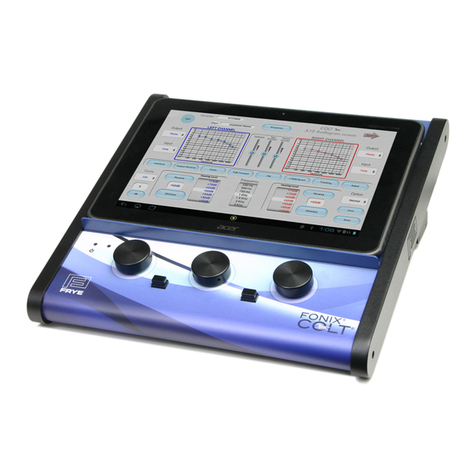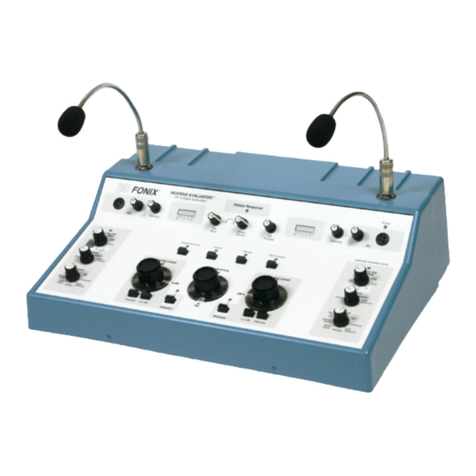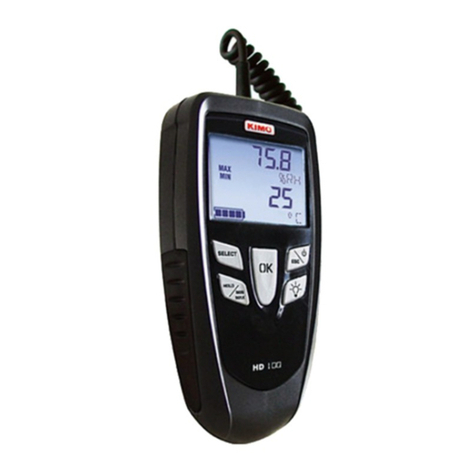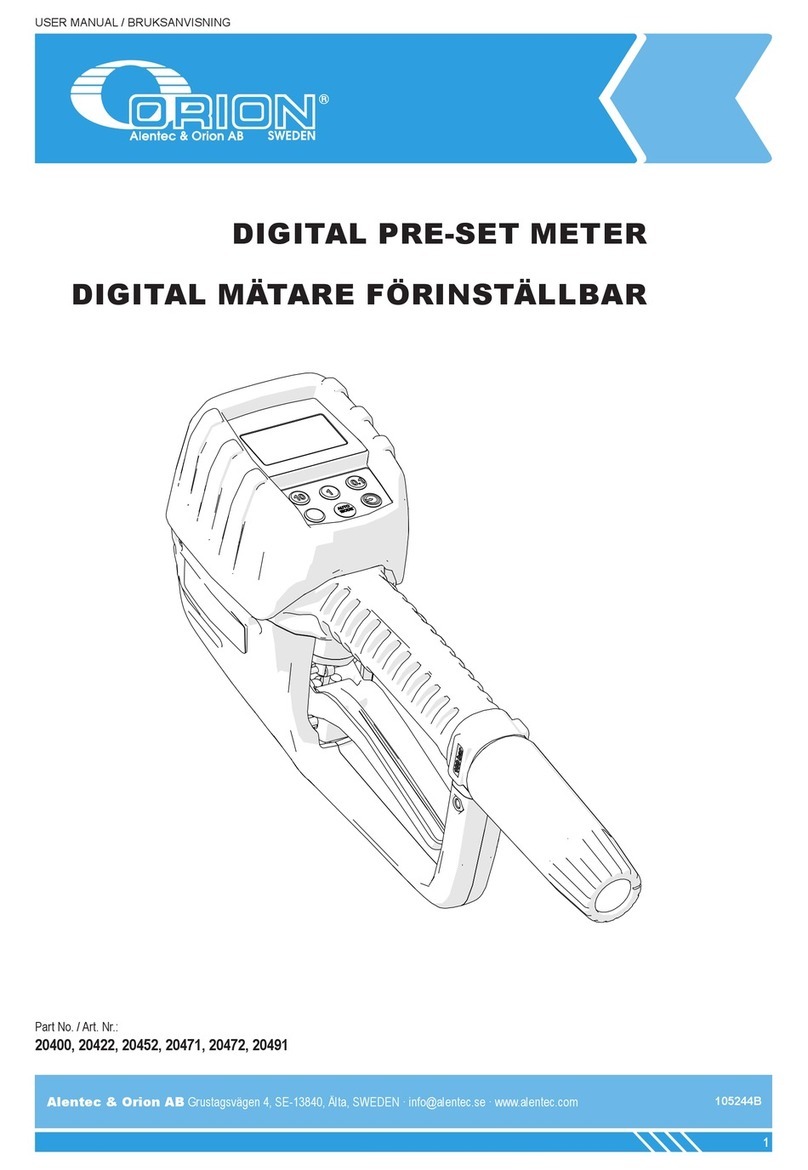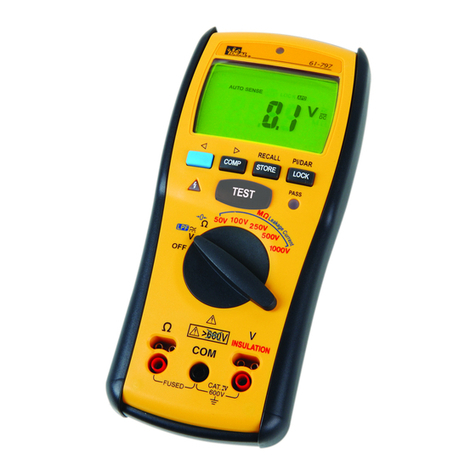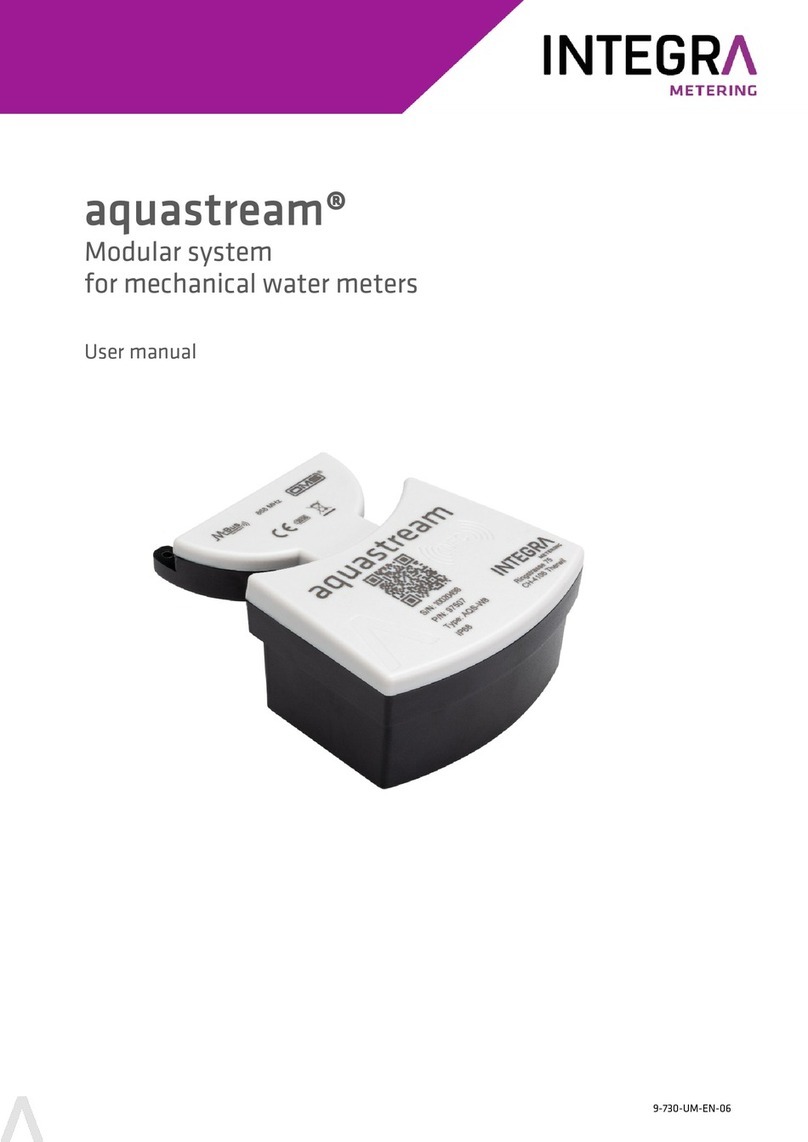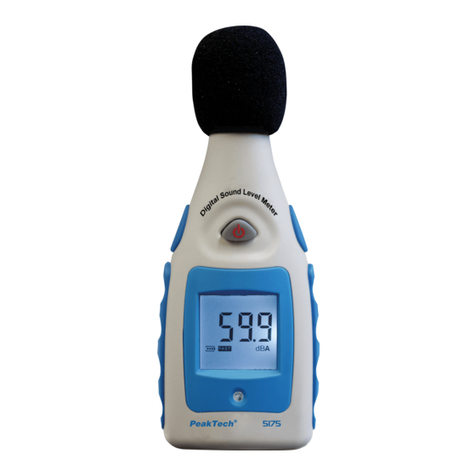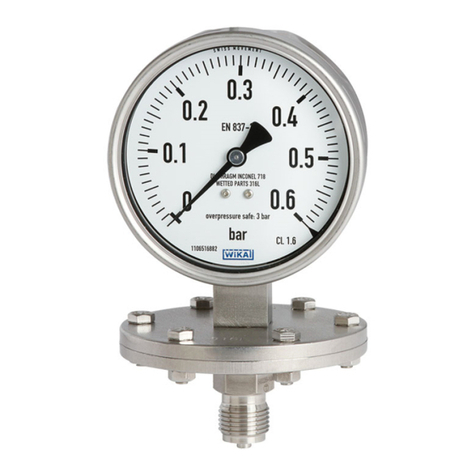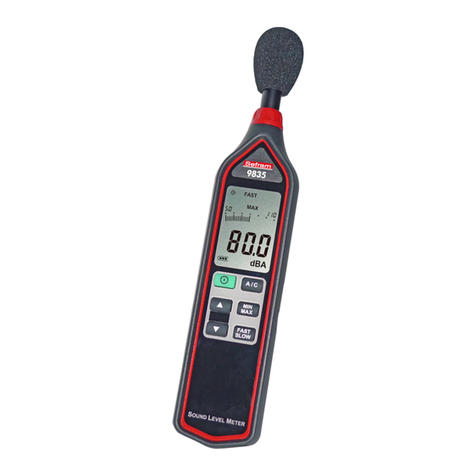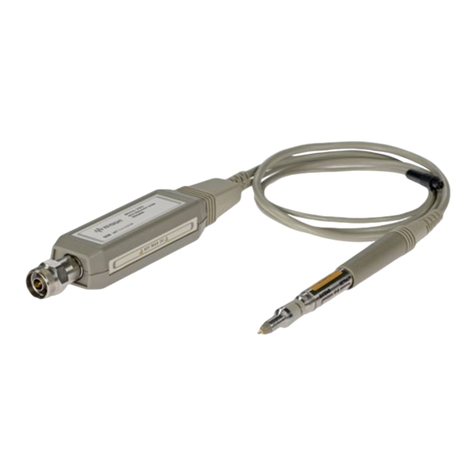Frye FONIX 6500-CX Operation instructions

TESTING
FM SYSTEMS
with the FONIX 6500-CX
Hearing Aid Analyzer
(Requires software version 4.20 or above)
FRYE
FRYE ELECTRONICS, INC.
P.O. Box 23391 • Tigard, OR 97281-3391
(503) 620-2722 • (800) 547-8209
Fax: (503) 639-0128

Contents
Introduction . . . . . . . . . . . . . . . . . . . . . . . . . . . . . . . . . . . . . . . . . . . . . . . . . . . . . . . . . . . . . . . . . . . . . . . . 1
General Fitting Protocol . . . . . . . . . . . . . . . . . . . . . . . . . . . . . . . . . . . . . . . . . . . . . . . . . . . . . . . . . . 2
Curve Labeling System . . . . . . . . . . . . . . . . . . . . . . . . . . . . . . . . . . . . . . . . . . . . . . . . . . . . . . . . . . 2
Arrangement of T is Workbook . . . . . . . . . . . . . . . . . . . . . . . . . . . . . . . . . . . . . . . . . . . . . . . . . . . 3
Section 1: Coupler Measurements with FM Systems
1.1 Coupler Setup in t e sound c amber . . . . . . . . . . . . . . . . . . . . . . . . . . . . . . . . . . . . . . . . . . . . . . . . 4
1.1.1 How to Attac t e 2-cc Coupler . . . . . . . . . . . . . . . . . . . . . . . . . . . . . . . . . . . . . . . . . . . . . . 4
1.1.2 Hearing Aid Setup . . . . . . . . . . . . . . . . . . . . . . . . . . . . . . . . . . . . . . . . . . . . . . . . . . . . . . . . . 6
1.1.3 FM System . . . . . . . . . . . . . . . . . . . . . . . . . . . . . . . . . . . . . . . . . . . . . . . . . . . . . . . . . . . . . . . . 7
1.1.4 Environmental Microp one Setup . . . . . . . . . . . . . . . . . . . . . . . . . . . . . . . . . . . . . . . . . . . . 9
1.2 Omni-directional: FM-only . . . . . . . . . . . . . . . . . . . . . . . . . . . . . . . . . . . . . . . . . . . . . . . . . . . . . . . . 11
1.2.1 Test aid alone wit typical input — EHA65 . . . . . . . . . . . . . . . . . . . . . . . . . . . . . . . . . . . . 11
1.2.2 Test FM microp one wit typical input — EFM80 . . . . . . . . . . . . . . . . . . . . . . . . . . . . . . 12
1.2.3 Test aid alone wit ig -level input — EHA90 . . . . . . . . . . . . . . . . . . . . . . . . . . . . . . . . . 13
1.2.4 Test FM system wit ig -level input — EFM90 . . . . . . . . . . . . . . . . . . . . . . . . . . . . . . . . 14
1.3 Omni-directional: FM+ENV . . . . . . . . . . . . . . . . . . . . . . . . . . . . . . . . . . . . . . . . . . . . . . . . . . . . . . . 16
1.3.1 Single frequency output of omni-directional earing aid in t e sound c amber . . . . . . 16
1.3.2 Single frequency output of omni-directional FM mic at 65 dB SPL . . . . . . . . . . . . . . . . . 17
1.3.3 Verify increase in signal level . . . . . . . . . . . . . . . . . . . . . . . . . . . . . . . . . . . . . . . . . . . . . . . . 17
1.3.4 Test aid alone wit typical input — EHA65 . . . . . . . . . . . . . . . . . . . . . . . . . . . . . . . . . . . . 17
1.3.5 Test FM+ENV microp ones wit typical input to FM microp one — EFE80 . . . . . . . . . 18
1.3.6 Test environmental microp one response wit typical input—EEF65 . . . . . . . . . . . . . . 20
1.3.7 Test aid alone wit ig -level input — EHA90 . . . . . . . . . . . . . . . . . . . . . . . . . . . . . . . . . 21
1.3.8 Test wit FM system using a ig -level input — EFE90 . . . . . . . . . . . . . . . . . . . . . . . . . . 21
1.3.9 Test environmental mic response wit ig -level input — EEF90 . . . . . . . . . . . . . . . . . . 23
1.4 Coupler Setup in t e Sound Field . . . . . . . . . . . . . . . . . . . . . . . . . . . . . . . . . . . . . . . . . . . . . . . . . . 24
1.4.1 Hearing Aid Setup . . . . . . . . . . . . . . . . . . . . . . . . . . . . . . . . . . . . . . . . . . . . . . . . . . . . . . . . 24
1.4.2 FM System Setup . . . . . . . . . . . . . . . . . . . . . . . . . . . . . . . . . . . . . . . . . . . . . . . . . . . . . . . . . 26
1.4.3 Environmental microp ones on body-worn receivers . . . . . . . . . . . . . . . . . . . . . . . . . . . 28
1.5 Directional: Testing FM-only . . . . . . . . . . . . . . . . . . . . . . . . . . . . . . . . . . . . . . . . . . . . . . . . . . . . . . . 30
1.5.1 Test aid alone wit typical input — EHA65 . . . . . . . . . . . . . . . . . . . . . . . . . . . . . . . . . . . . 30
1.5.2 Test FM microp one wit typical input — EFM80 . . . . . . . . . . . . . . . . . . . . . . . . . . . . . . 31
1.5.3 Test aid alone wit ig -level input — EHA90 . . . . . . . . . . . . . . . . . . . . . . . . . . . . . . . . . 32
1.5.4 Test FM system wit ig -level input — EFM90 . . . . . . . . . . . . . . . . . . . . . . . . . . . . . . . . 33
1.6 Directional: Testing FM+ENV . . . . . . . . . . . . . . . . . . . . . . . . . . . . . . . . . . . . . . . . . . . . . . . . . . . . . . 34
1.6.1 Single frequency output of earing aid . . . . . . . . . . . . . . . . . . . . . . . . . . . . . . . . . . . . . . . 34
1.6.2 Single frequency output of FM mic at 65 dB SPL . . . . . . . . . . . . . . . . . . . . . . . . . . . . . . . . 35
1.6.3 Verify increase in signal level . . . . . . . . . . . . . . . . . . . . . . . . . . . . . . . . . . . . . . . . . . . . . . . . 35
1.6.4 Test aid wit typical input — EHA65 . . . . . . . . . . . . . . . . . . . . . . . . . . . . . . . . . . . . . . . . . 36

1.6.5 Test FM+ENV microp ones wit typical input to FM microp one — EFE80 . . . . . . . . . 37
1.6.6 Test environmental mic response wit typical input — EEF65 . . . . . . . . . . . . . . . . . . . . 38
1.6.7 Test aid wit ig -level input — EHA90 . . . . . . . . . . . . . . . . . . . . . . . . . . . . . . . . . . . . . . 39
1.6.8 Test wit FM system using a ig -level input — EFE90 . . . . . . . . . . . . . . . . . . . . . . . . . . 40
1.6.9 Test environmental mic response wit ig -level input — EEF90 . . . . . . . . . . . . . . . . . . 41
Section 2: Real-Ear Evalutation with FM Systems
2.1 Setup . . . . . . . . . . . . . . . . . . . . . . . . . . . . . . . . . . . . . . . . . . . . . . . . . . . . . . . . . . . . . . . . . . . . . . . . . 42
2.1.1 Hearing Aids . . . . . . . . . . . . . . . . . . . . . . . . . . . . . . . . . . . . . . . . . . . . . . . . . . . . . . . . . . . . . 42
2.1.2 FM System . . . . . . . . . . . . . . . . . . . . . . . . . . . . . . . . . . . . . . . . . . . . . . . . . . . . . . . . . . . . . . . 43
2.1.3 Setup for Testing Environmental Microp ones . . . . . . . . . . . . . . . . . . . . . . . . . . . . . . . . . 44
Environmental microp ones on body-worn receivers . . . . . . . . . . . . . . . . . . . . . . . . . . . 45
Environmental microp one on a earing aid . . . . . . . . . . . . . . . . . . . . . . . . . . . . . . . . . . . 45
2.2 Testing FM-Only . . . . . . . . . . . . . . . . . . . . . . . . . . . . . . . . . . . . . . . . . . . . . . . . . . . . . . . . . . . . . . . . 46
2.2.1 Test aid wit typical input — RHA65 . . . . . . . . . . . . . . . . . . . . . . . . . . . . . . . . . . . . . . . . . 46
2.2.2 Test FM system wit typical input — RFM80 . . . . . . . . . . . . . . . . . . . . . . . . . . . . . . . . . . 47
2.2.3 Test aid wit ig -level input—RHA90 . . . . . . . . . . . . . . . . . . . . . . . . . . . . . . . . . . . . . . . 48
2.2.4 Test FM system wit ig -level input—RFM90 . . . . . . . . . . . . . . . . . . . . . . . . . . . . . . . . . 49
2.3 Testing FM+ENV . . . . . . . . . . . . . . . . . . . . . . . . . . . . . . . . . . . . . . . . . . . . . . . . . . . . . . . . . . . . . . . . 50
2.3.1 Single frequency output of earing aid . . . . . . . . . . . . . . . . . . . . . . . . . . . . . . . . . . . . . . . 50
2.3.2 Single frequency response of FM mic at 65 dB SPL . . . . . . . . . . . . . . . . . . . . . . . . . . . . . . 51
2.3.3 Verify increase in signal level . . . . . . . . . . . . . . . . . . . . . . . . . . . . . . . . . . . . . . . . . . . . . . . . 51
2.3.4 Test aid wit typical input – RHA65 . . . . . . . . . . . . . . . . . . . . . . . . . . . . . . . . . . . . . . . . . . 52
2.3.5 Test FM system wit typical input – RFM80 . . . . . . . . . . . . . . . . . . . . . . . . . . . . . . . . . . . 53
2.3.6 Test environmental mic wit typical input—REF65 . . . . . . . . . . . . . . . . . . . . . . . . . . . . . 54
2.3.7 Test aid wit ig -level input—RHA90 . . . . . . . . . . . . . . . . . . . . . . . . . . . . . . . . . . . . . . . 55
2.3.8 Test FM system wit ig -level input—RFE90 . . . . . . . . . . . . . . . . . . . . . . . . . . . . . . . . . 56
2.3.9 Test environmental mic wit ig -level input—REF90 . . . . . . . . . . . . . . . . . . . . . . . . . . . 57
Glossary: . . . . . . . . . . . . . . . . . . . . . . . . . . . . . . . . . . . . . . . . . . . . . . . . . . . . . . . . . . . . . . . . . . . . . . . . . . 58

1
Introduction
Introduction
This workbook contains procedures for testing FM systems with the 6500-CX hearing aid
analyzer using coupler and real-ear measurement methods. An FM system consists of two
main parts: a transmitter and a receiver. The transmitter microphone can come in many dif-
ferent sizes and shapes, and it can be omni-directional or directional. The body-worn FM
receiver can be coupled to a button earphone or interfaced with the personal hearing aid via
a direct audio input boot, silhouette coil, or via a neck loop. The ear-level FM receivers are
housed within the BTE aid or attached to the base of the BTE via a boot connection.
No matter the combination, all FM systems can be tested. These test procedures should be
performed on an FM system at least once a year. For children under the age of 5, these pro-
cedures should be performed every six months.
As with most hearing aids, both the gain and the maximum output (SSPL) of an FM system
should be adjusted to meet the listener’s auditory requirements.
There are several issues to consider when comparing the hearing aid and FM performance.
• With FM systems, the pickup microphone is normally worn at the chest, 6-8 inches
(15-20 cm) under the mouth of the talker, whereas with hearing aids, the pickup
microphone is worn by the listener, typically at a minimum of 3 ft. (1 m) from the
talker. This difference affects both the level and the frequency content of typical
input signals. With FM systems, typical speech input levels range from 75 to 85 dB
SPL, as compared with 60 to 70 dB SPL for hearing aids. With the chest-worn loca-
tion of the pickup microphone, the high frequencies are relatively lower in level
(about 5 dB at 5 kHz) and the low frequencies are relatively higher in level (about 5
dB at 500 Hz) as compared with directly in front of the talker’s mouth.
• The increased “vocal effort” by teachers in a classroom situation may create further
changes to the speech spectrum at the input to an FM system, as compared with the
speech spectrum at the input of a hearing aid (Cornelisse et al., 1991).
• FM systems often have an automatic gain control (AGC) or other nonlinear charac-
teristic that could interact with that of the hearing aid being used to deliver the FM
signal—if such a hearing aid is being used in this fashion.
• The frequency response of an FM system is often not as adjustable as that of a hear-
ing aid, limiting the range of electroacoustic modifications available.
The procedures recommended in this chapter are based on the ASHA guidelines for fitting
and monitoring FM systems (1999), available at:
www.asha.org/audiology/fm_guidelines.htm.

2Testing FM Systems with FONIX FP40 Analyzers
General Fitting Protocol
For the purposes of this workbook, we will assume that the hearing aid being tested has
been fitted appropriately for the client’s loss. We will adjust the FM system to the output of
the hearing aid.
Goals:
• For students with mild to moderately-severe losses (<80 dB HL), the goal is to match the
output of the hearing aid and the FM system when typical input signals are used. With
typical inputs, the FM output will be the same intensity as the hearing aid output.
• For students with severe to profound losses (>80 dB HL), the goal is to match the gain of
the hearing aid and the FM system when typical input signals are used. With typical
input signals, the FM output will be about 10 dB more intense than the hearing aid out-
put.
Testing Order:
Start with 2-cc coupler tests and adjustments if possible. Follow up with real-ear verification.
If time doesn’t permit both test conditions, omit the 2-cc coupler tests. For both 2-cc coupler
and real-ear tests:
1. Test the user’s hearing aid with typical input signal levels.
2. Test the FM system with typical input signal levels, and make any necessary adjust-
ments.
3. Test the user’s hearing aid with high input signal levels.
4. Test the FM system with high input signal levels, and make any necessary adjust-
ments.
Curve Labeling System
In order to efficiently record and refer to the various measurements, we have adopted a
curve labeling system created by Dr. Linda Thibodeau. This system is consistent with the
type of measurement made and the SPL of the test signal used.
• The first letter indicates whether it was a coupler or a real-ear measurement.
– All coupler measurement labels begin with an “E” for “Electroacoustic.”
– All real-ear measurement labels begin with an “R” for “Real-Ear.”
• The second and third letters indicate the type of test taken.
– “HA” means a hearing aid test
– “FM” means an FM-only test
– “FE” means an FM+ENV test with the signal delivered to the FM microphone
– “EF” means an FM+ENV test with the signal delivered to the environmental micro-
phone

3
Introduction
• The numbers at the end indicate the sound pressure level of the test signal used.
Examples:
– EHA65 is the electroacoustic coupler measurement of the hearing aid with the signal
input at 65 dB SPL
– EFM80 is the electroacoustic coupler measurement of the FM microphone with the sig-
nal input at 80 dB SPL
– RFE80 is the real-ear measurement of the FM+ENV with the signal delivered to the
FM microphone at 80 dB SPL
See the Glossary for a list of all the labels and their definitions.
Arrangement of This Workbook
There are two main sections in this workbook. Section 1 describes sets of coupler measure-
ments of FM systems. Section 2 describes corresponding sets of real-ear measurements of
FM systems.
Section 1 contains four different sets of testing procedures, but you only need to follow the
testing procedure suitable for the FM system being tested. Section 2 contains two different
sets of testing procedures. Likewise, you only need to follow the real-ear procedures suitable
for the FM system. Ideally, you should perform one set of coupler measurements and one
set of real-ear measurements on each FM system.
It is assumed that you will perform the specified tests in sequential order. For instance, the
instructions in Section 1.2.2, Testing the FM response with typical input, assume that you have
done the steps in Section 1.2.1, Testing the hearing aid response with typical input. If it is more
convenient for you to alter the testing order, just be aware that some of the key presses will
change.

4Testing FM Systems with FONIX 6500-CX Analyzers
1: Coupler Measurements with FM Systems
Coupler measurements of FM systems allow you to adjust the system without needing your
client present. The goal is to set the FM system controls so that the user receives the FM sig-
nal at an appropriate level with reference to the acoustic signal the user receives from his
personal hearing aid.
There are four different sets of measurements described in this section. Use the set that is
appropriate for the FM system setup.
If the FM receiver and hearing aid are omni-directional and will fit inside the sound cham-
ber, and:
• The FM receiver is primarily set to receive FM-only signals, follow the procedures
described in Section 1.2, Omni-directional: Testing FM-only.
• The FM receiver is primarily set to receive FM with environmental signals
(FM+ENV), follow the procedures described in Section 1.3, Omni-directional: Testing
FM+ENV.
If the FM receiver or hearing aid is directional or cannot fit inside the sound chamber, and
• The FM receiver is primarily set to receive FM-only signals, follow the procedures
described in Section 1.5, Directional: Testing FM-only.
• The FM receiver is primarily set to receive FM with environmental signals
(FM+ENV), follow the procedures described in Section 1.6, Directional: Testing
FM+ENV.
For all procedures, the hearing aid should be set to user settings.
1.1 Coupler Setup in the sound chamber
This section describes how to attach a 2-cc coupler to the FM receiver, and how to set up an
FM system for coupler measurements.
1.1.1 How to Attach the 2-cc Coupler
A variety of output devices can be used with FM systems. These include button earphones,
BTE cases with microphone/earphones, BTE aids with an internal FM receiver, an external
FM receiver boot, or options for coupling to the personal BTE hearing aid via direct audio
inputs, silhouette coils, or neck loops. This section contains a description of how to arrange
the 2-cc coupler with each type of output device.

5
Section 1: Coupler Tests of FM Systems
Figure 1.1.1A Figure 1.1.1B Figure 1.1.1C
Button earphone Internal FM receiver Silhouette coil
External FM boot receiver
Direct audio input
Button earphone (Figure 1.1.1A)
1. Remove the ear-level adapter from the HA-2 coupler, if necessary.
2. Snap on the button earphone to the HA-2 coupler.
3. Place the coupler/hearing-aid assembly on a foam pad outside the text box, 2 ft. (60
cm) from the transmitter during testing.
BTE case with microphone/earphone or BTE aid with internal FM receiver, external FM
boot receiver, or direct audio input (Figure 1.1.1B)
1. Attach the ear-level adapter to the HA-2 coupler, if necessary.
2. Attach the BTE hearing aid to the HA-2 coupler.
3. Place the coupler/hearing-aid assembly on a foam pad outside the test box, 2 ft. (60
cm) from the transmitter during testing.
BTE aid with silhouette coil (Figure 1.1.1C)
1. Attach the ear-level adapter to the HA-2 coupler, if necessary.
2. Attach the BTE hearing aid to the HA-2 coupler.
3. Place the coupler/hearing-aid assembly on a foam pad outside the text box, 2 ft. (60
cm) from the transmitter during testing. Choose a location free of stray magnetic
fields (away from video monitors and other electrical devices). It may be necessary
to turn the analyzer’s video monitor off during testing.
4. Align the silhouette coil underneath the hearing aid, simulating the way it would be
worn on the ear.
Foam Pad Foam Pad Foam Pad
to Anal
y
zer to Anal
y
zer to Anal
y
zer
FM
Receiver FM
Receiver FM
Receiver

6Testing FM Systems with FONIX 6500-CX Analyzers
BTE aid with neck loop (Figure 1.1.1D)
1. Within the range of the coupler microphone cable, choose a location to seat the lis-
tener that is free of stray magnetic fields (away from video monitors and other elec-
trical devices), while also maintaining the required separation (2 ft./60 cm) from the
transmitter. It may be necessary to turn the analyzer’s video monitor off during test-
ing.
2. Place the neck loop around the listener’s neck or around the neck of a person of sim-
ilar size.
3. Attach the listener’s hearing aid to the HA-2 coupler.
4. While holding the coupler in hand, place the hearing aid at the listener’s ear, as typi-
cally worn.
5. Take care not to move or touch the coupler microphone while testing.
Figure 1.1.1D
Neck loop
to Analyzer
FM Receiver

7
Section 1: Coupler Tests of FM Systems
1.1.2 Hearing Aid Setup
1. Make sure the sound chamber is leveled.
2. Attach the hearing aid, set to user settings, to the HA-2 coupler in the usual way. Be
sure the FM transmitter is off and the aid is set to receive the signal from the hearing
aid microphone. See Figure 1.1.2.
3. Insert the coupler microphone into the coupler.
4. Place the assembly into the sound chamber.
5. Close and latch the sound chamber door.
Figure 1.1.2
Hearing aid setup with FM boot
1.1.3 FM System
1. Make sure the sound chamber is leveled.
2. Set the FM receiver to receive FM-only.
3. Insert the coupler microphone into the HA-2 coupler and attach the output of the
FM receiver as explained in Section 1.1.1, and place at least 2 ft. (60 cm) from all
transmitter parts. See Figure 1.1.3A.
4. Place the FM transmitting microphone at the test position in the chamber.
5. Close the lid and latch the chamber.

8Testing FM Systems with FONIX 6500-CX Analyzers
Figure 1.1.3A
FM setup
Isolating the environmental microphone
When the FM system is usually used in FM+ENV mode, the testing procedures call for the
environmental microphone to be turned on as well at the FM microphone. In most quiet test-
ing environments, this will call for the FM setup described above. However, if you are test-
ing in a noisy environment, you may want to isolate the environmental microphone from the
room noise.
To check if you need to provide sound isolation for the environmental microphone when
testing the FM microphone in FM+ENV mode, do this procedure:
1. Set the FM microphone up for testing as described above.
2. Set the FM receiver to receive FM only.
3. Observe the RMS OUT for this FM-only signal.
4. Set the FM receiver to receive FM+ENV.
5. Observe the RMS OUT for the FM+ENV setting. If the RMS OUT is more than 3 dB
higher for FM+ENV than for FM-only, then you will need to isolate the environmen-
tal microphone when testing the FM microphone in FM+ENV mode. If the RMS
OUT for both signals is within 3 dB, no additional setup is necessary.
6. To isolate the environmental microphone, it is preferable to use a spare sound cham-
ber if one is available to you. Otherwise, take a shoebox, line it with packing foam,
and place the environmental microphone inside, covering it with some more foam.
See Figure 1.1.3B. This should isolate the room noise from the environmental micro-
phone.
Transmitter
Receiver
Foam Pad
6500 Main
Electronics Module
Test Chamber
2 ft.
(60 cm)
FM Mic
(or Environmental Mic)

9
Section 1: Coupler Tests of FM Systems
Figure 1.1.3B
Isolating the environmental microphone
1.1.4 Environmental Microphone Setup
Environmental microphones on ear-level FM receivers
1. Make sure the sound chamber is leveled.
2. Attach the ear-level FM receiver to the HA-2 coupler and set it to receive input from
the environmental microphone only.
3. Insert the coupler microphone into the HA-2 coupler.
4. Place the ear-level receiver and coupler at the test position in the sound chamber.
5. Close and latch the sound chamber lid.
6. You are now ready to test the FM system with the signal delivered to the environ-
mental microphone.
Shoebox lined
with foam
Isolate
environmental
microphone
FM mic

10 Testing FM Systems with FONIX 6500-CX Analyzers
Lapel environmental microphones on Body-worn FM Receivers
1. Make sure the sound chamber is leveled.
2. Attach the output transducer from the FM receiver to the HA-2 coupler outside the
sound chamber as described in Section 1.1.1.
3. Insert the coupler microphone into the HA-2 coupler.
4. Place the lapel microphone from the FM receiver at the test position in the sound
chamber. See Figure 1.1.4.
5. Close and latch the lid of the sound chamber.
6. You are now ready to test the FM system with the signal delivered to the environ-
mental microphone.
Figure 1.1.4
Testing lapel receivers

11
Section 1: Coupler Tests of FM Systems
1.2 Omni-directional: FM-only
This section contains a description of the four different coupler measurements of FM systems
when the client primarily uses the system in FM-only mode. These measurements are:
• EHA65: typical electroacoustic response of the aid
• EFM80: typical electroacoustic response of the FM transmitter/receiver
• EHA90: saturation electroacoustic response of the aid
• EFM90: saturation electroacoustic response of the FM transmitter/receiver
1.2.1 Test aid alone with typical input — EHA65
1. Set up the hearing aid according to the hearing aid setup described in Section 1.1.2.2.
Press [RESET] to enter Composite Weighted Gain Mode.
3. Press [WEIGHT] to enter Composite Weighted Power Mode. The display will be
labeled as OUTPUT SPL.
4. Use [∨] to set RMS Source to 65 dB SPL.
5. Once the curve is stable, press [FREEZE] to pause the measurement. If the 6500-CX
has the Multi-Curve Option, press [START] (not [CONTINUE]!) to save the curve
into the Multi-Curve stack. For units without Multi-Curve, press [CRT] to print the
measurement.
6. This will be referred to as the Electroacoustic Hearing Aid Response or EHA65. See
Figure 1.2.1.
Figure 1.2.1
EHA65—hearing aid response at 65 dB SPL

12 Testing FM Systems with FONIX 6500-CX Analyzers
1.2.2 Test FM microphone with typical input — EFM80
1. Set up the FM system according to the FM system setup in Section 1.1.3.
2. Use [∧] to adjust the signal level to 80 dB SPL.
3. This curve will be referred to as the Electroacoustic FM Response or EFM80. (Since
the current running curve is always stored as CRV 1 in the Multi-Curve buffer, there
is no need to press [FREEZE] and [START] to save the curve as you did in Section
1.2.1.)
4. To view the EFM80 and EHA65 on the same screen requires the Multi-Curve Option:
a. Press [MULTI].
b. Highlight MULTIPLE CURVES.
c. Press [START].
d. If necessary, use [<, >] to display CRV 1 in the first slot. This curve is EFM80.
e. Use [∨] to select the second slot.
f. If necessary, use [<, >] to display CRV 2 in the second slot. This curve is EHA65.
See Figure 1.2.2.
If you don’t have the Multi-Curve Option, press [CRT] to print out EFM80 and com-
pare it to EHA65.
Figure 1.2.2
Comparison of EHA65 (CRV2), the hearing aid response at 65 dB
SPL and EFM80 (CRV1), the FM response at 80 dB SPL

13
Section 1: Coupler Tests of FM Systems
5. If you have a client with a mild to moderate hearing loss (less than 80 dB HL), the
output of the two curves should be within 5 dB of each other. If you have a client
with a severe to profound loss (greater than 80 dB HL), the output of EFM80 should
be 7-10 dB higher than the output of EHA65.
If you have to adjust the system to obtain a better result, first adjust the FM receiver
volume control if possible. When using FM systems coupled to personal hearing
aids adjust the settings on the hearing aid as a final step if necessary. If this must be
done, the teacher, parents, and therapists must be made aware that when the FM
system is used, the settings on the hearing aid must be changed for optimum per-
formances.
1.2.3 Test aid alone with high-level input — EHA90
1. Turn off the FM signal, and set up the hearing aid for testing as described in the
hearing aid setup in Section 1.1.2.
2. Press [SINE/COMPOSITE] button to enter Pure Tone Mode. The analyzer will auto-
matically set itself to a signal level of 90 dB SPL.
3. Press [START] to begin the pure-tone sweep. The response will be stored in the
Multi-Curve stack when the measurement is complete. For instruments without the
Multi-Curve option, press [CRT] to print a hardcopy.
Figure 1.2.3
EHA90—hearing aid response at 90 dB SPL
4. This response will be referred to as the Electroacoustic Hearing Aid Saturation
Response or EHA90. See Figure 1.2.3.

14 Testing FM Systems with FONIX 6500-CX Analyzers
1.2.4 Test FM system with high-level input — EFM90
1. Set up the FM system for testing according to the FM setup in Section 1.1.3. The FM
receiver should be set to receive FM-only signals.
2. Press [START] to begin the pure-tone sweep. The response will be stored in the
Multi-Curve stack when the measurement is complete. For instruments without the
Multi-Curve option, press [CRT] to print a hardcopy.
3. This response will be referred to as the Electroacoustic FM Saturation Response or
EFM90.
Figure 1.2.4
Comparison of EHA90 (CRV2), the hearing aid response at 90 dB
SPL with EFM90 (CRV1), the FM response at 90 dB
4. To view both curves on the same screen requires the Multi-Curve Option:
a. Press [MULTI].
b. Highlight MULTIPLE CURVES.
c. Press [START].
d. If necessary, use [<, >] to display CRV 1 in the first slot. This curve is EFM90.
e. Use [∨] to select the second slot.
f. If necessary, use [<, >] to display CRV 2 in the second slot. This curve is EHA90.

15
Section 1: Coupler Tests of FM Systems
g. You may want to press [∨] and [FREEZE] to turn off the display of CRV 3, since
it is not relevant to this comparison. Similarly, press [∨] and [FREEZE] again to
turn off the display of CRV 4.
If you don’t have the Multi-Curve Option, press [CRT] to print out EFE90 and com-
pare it to EHA90.
5. If EFM90 is greater than 5 dB above or 10 dB below EHA90, adjust the maximum
output control if possible on the FM receiver or on the hearing aid if necessary. If the
hearing aid is adjusted, the teacher, parents, and therapists must be made aware that
when the FM system is used, the settings on the hearing aid must be changed for
optimum performances. For mild to moderate losses it may be acceptable if the
EFM90 is 5-10 dB below EHA90. See Figure 1.2.4.

16 Testing FM Systems with FONIX 6500-CX Analyzers
1.3 Omni-directional: FM+ENV
This section contains a description of the different coupler measurements of omni-directional
FM systems when the client primarily uses the system with the environmental microphone
added to the FM signal (FM+ENV mode). These measurements are:
• Response of aid with 65 dB SPL signal at 1 kHz
• Response of FM transmitter/receiver with 65 dB SPL signal at 1 kHz
• Verify increase of FM transmitter/receiver when signal level is increased to 80 dB SPL.
• EHA65: typical electroacoustic response of the aid
• EFE80: typical electroacoustic response of the FM transmitter/receiver
• EEF65: typical electroacoustic response of environmental microphone
• EHA90: saturation electroacoustic response of the aid
• EFE90: saturation electroacoustic response of the FM transmitter/receiver
• EEF90: saturation electroacoustic response of environmental microphone
1.3.1 Single frequency output of omni-directional hearing aid in the sound chamber
1. Set up the hearing aid for testing as described in the hearing aid setup in Section
1.1.2. The FM transmitter should be off, and the hearing aid set to receive input from
the hearing aid microphone.
2. Press [RESET].
3. Press [SINE/COMPOSITE] to put the analyzer in PURE TONE MODE.
4. If necessary, use [<, >] to adjust the frequency of the single tone signal to 1000 Hz.
Figure 1.3.1
Hearing aid output at 65 dB SPL at 1000 Hz

17
Section 1: Coupler Tests of FM Systems
5. Use [∨] to adjust the level of the signal to 65 dB SPL.
6. Make a note of the AID OUT on the screen. This is the HEARING AID OUTPUT. See
Figure 1.3.1.
1.3.2 Single frequency output of omni-directional FM mic at 65 dB SPL
1. Set up the FM microphone for testing as described in the FM setup in Section 1.1.3.
The FM receiver should be set to receive FM+ENV.
2. If you followed the steps of Section 1.3.1, the analyzer should be in PURE TONE
MODE with a 65 dB SPL signal at 1000 Hz.
3. Look at the AID OUT on the screen. This is the FM OUTPUT.
4. Adjust the FM receiver volume so that the FM OUTPUT is matched to the HEAR-
ING AID OUTPUT found in Section 1.3.1. This matches the gain of the FM system
and the hearing aid.
1.3.3 Verify increase in signal level
1. Leave the FM system and analyzer set up as described in Section 1.3.2 with the aid
or FM receiver attached to the 2-cc coupler and set to receive FM+ENV.
2. Press [∧] repeatedly to increase the signal level to 80 dB SPL.
3. Look at the AID OUT on the screen. This is the new FM OUTPUT.
4. Compare the HEARING AID OUTPUT found in Section 1.3.1 to this new FM OUT-
PUT, and adjust the FM receiver volume control according to the following:
If the increase is:
• 10 dB, no further adjustments are necessary.
• 15 dB, reduce the FM receiver volume control so that the FM OUTPUT falls by 5 dB.
• 5 dB, increase the FM receiver volume control so that the FM OUTPUT increases
by 7 or 8 dB.
• 0 dB, the FM transmitter must have a very low compression threshold, so
increase the FM receiver volume control so that the FM OUTPUT increases by 5
dB.
1.3.4 Test aid alone with typical input — EHA65
1. Set up the hearing aid for testing as described in Section 1.1.2. The FM transmitter
should be off, and the hearing aid set to receive input from the hearing aid micro-
phone.
2. Press [RESET] to enter Composite Weighted Gain Mode.
3. Press [WEIGHT] to enter Composite Weighted Power Mode.
4. Use [∨] to set RMS Source to 65 dB SPL.
Table of contents
Other Frye Measuring Instrument manuals
